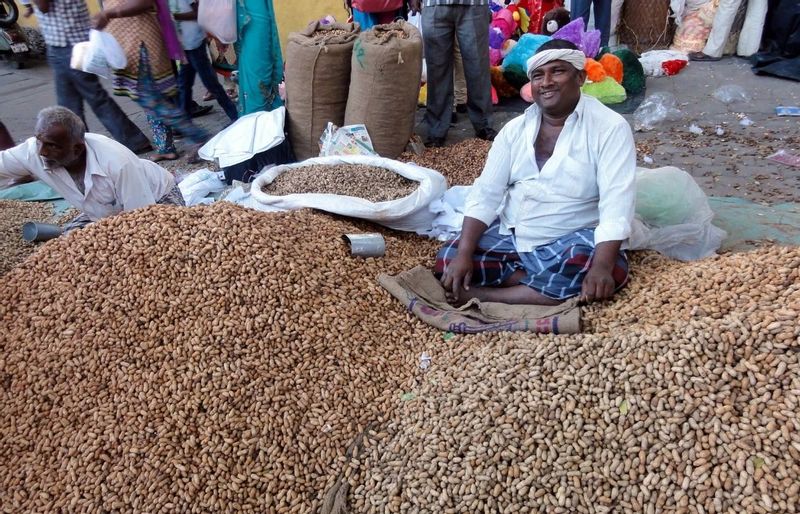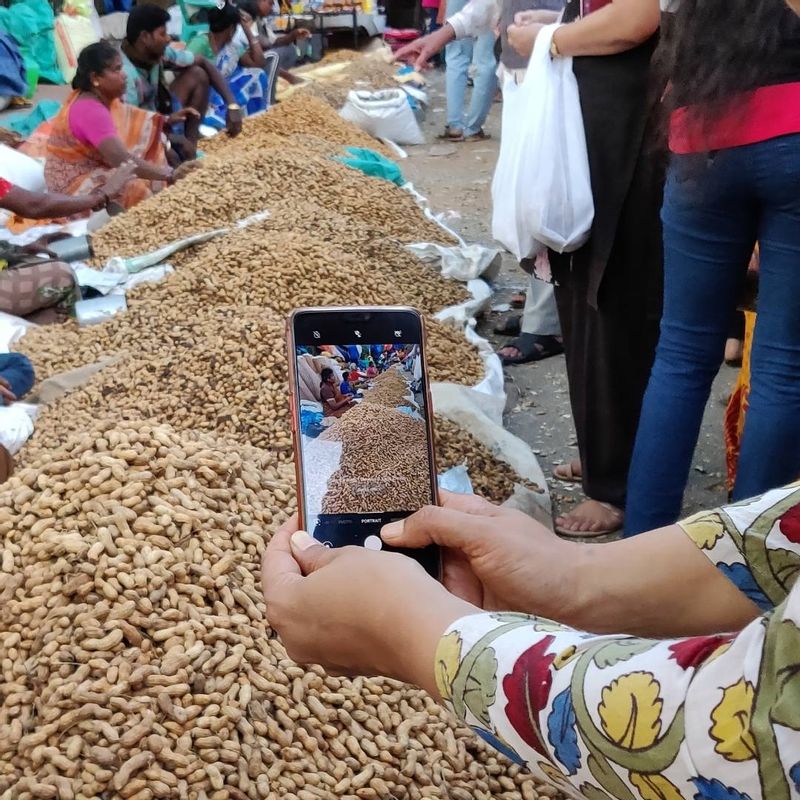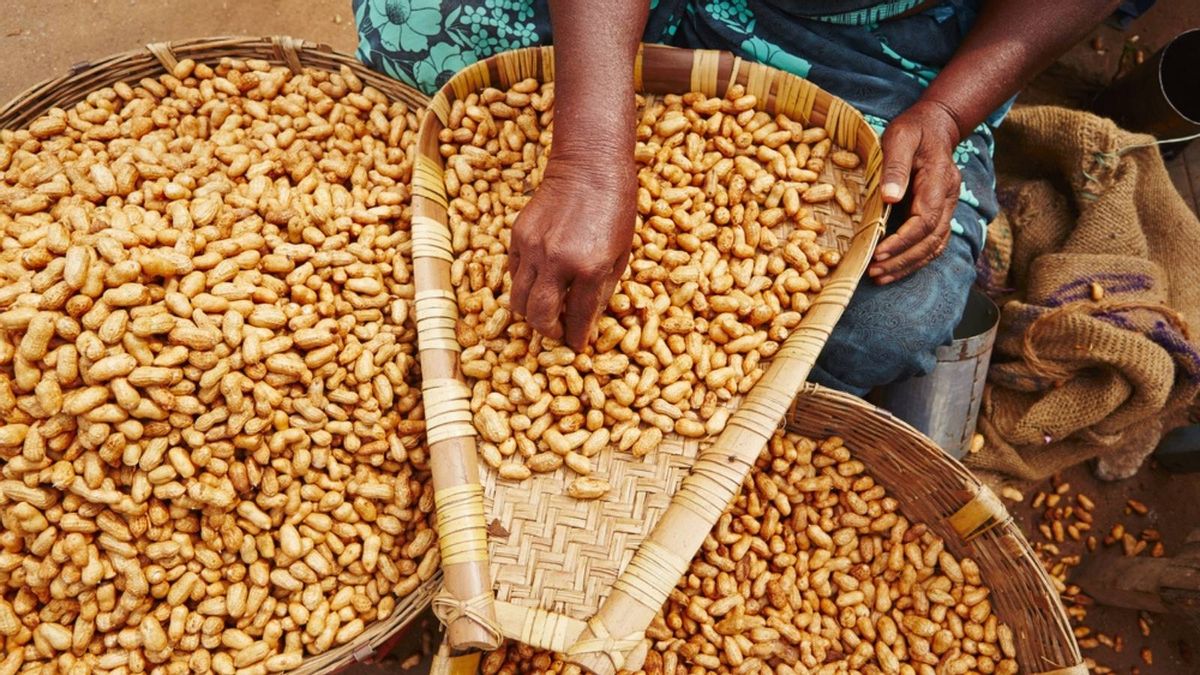It is a common sight to see tourist buses parked on either side of the busy bull temple road in south Bengaluru almost on all days of the week. A key tourist attraction of the city, the bull temple—locally known as Basavanagudi, and after which the road, as well as the locality, is named—is over 500 years old. A highly revered landmark steeped in myth and legend, the bull temple is one of the few temples dedicated to Nandi or the holy bull who is the mount or vehicle (vahana) of Lord Shiva. Incidentally, it is also the epicentre of Bengaluru's renowned and unique festival, Kadlekai Parishe which translates into groundnut fair in Kannada.
Legendary origins
History has it that the groundnut festival first took place way back in the year 1537 AD, making it over 480 years old. The festival is held in the open air on bull temple road and in the premises of the bull temple, which also houses the renowned Dodda Ganapati temple (Big Ganesha temple). Basavanagudi whose name is derived from the bull temple is also the name of one of the oldest localities of Bengaluru. According to history, the entire area of Basavanagudi and its surrounding villages, namely—Sunkenahalli, Gavipuram Guttahalli, and Mavalli—were home to lush fields of groundnut.
Legend has it that every full moon night, these crops would be ravaged by a ferocious bull. Worried about the situation, the farmers decided to appease the bull by building a temple for it. Kempe Gowda, a chieftain who is also widely considered as the founder of Bengaluru, then built the bull temple dedicated to Nandi or the sacred bull. The idol here is a whopping 4.6 metres tall and about 6.1 metres long, and the temple is built in the Vijayanagar style that was prevalent in the 1500s.

Farmers prayed to the bull for the safety of their crop and pledged to offer the first harvest of groundnuts to the Lord. Since then, this auspicious ritual takes place each year during the Hindu month of Karthika and the offering is made on the last Monday of the month. While there is no fixed date, the much-awaited festival falls during the end of November or the beginning of December. Groundnut farmers from the surrounding villages and states take part in the ritual and set shop as part of the fair.
Heritage festival
Kadlekai Parishe is an annual ritual that is not only a tradition but intrinsic to the culture of the city. Each year the entire bull temple road, which is close to two kilometres long, is closed for traffic and hundreds of groundnut farmers set up their crop in heaps which are purchased by visitors and locals alike. Groundnuts are sold in ‘litres’, measured in traditional aluminium apparatus; and on offer are raw, roasted, and even boiled groundnuts. Apart from the sea of groundnuts, a visit to the fair is akin to taking a trip back in time—for, on sale are items from the yesteryears that bring back fond memories. Whether it is the colourful traditional candies (mithai), savoury snacks, terracotta lamps, pickle jars, cast-iron cookware, or traditional toys—all of them are reminiscent of times that were pleasantly slow.

The entire ambience exudes carnival-like vibes with balloons, toys and games set up for adults and children alike. Soap bubbles, paper wheels, trinkets and knick-knacks are sold by hawkers galore. A giant wheel is set up and there are vendors selling blow out whistles, noisemakers, and even toy horns. The entire road is teeming with people—including tourists, locals, and visitors making a beeline to the fair along with family and friends. With people jostling for space, the excitement and noise can be felt till late into the night, along with the sounds of happy kids blowing horns and whistles that pierce sharply into the winter breeze.
Bigger and grander over the years
The Kadlekai Parishe has grown by leaps and bounds since it first began. While the actual event is on the last Monday of the Hindu month of Karthik and lasted for about two days in the past—the festival has stretched for more than a week since the last few years. It was the first time that the festival was cancelled in all these centuries due to COVID-19 in 2020. This year the fair is back with a bang with the main event on November 29. But the action is expected to unfold the weekend before, extending well up to the next eight to 10 days. A whopping thousand farmers from as far as Tamil Nadu and Andhra Pradesh are expected to arrive and display their produce. A footfall of over 6 lakh people is expected. The local administration (BBMP) has assured that the festivities will be held keeping in mind Covid protocols.
The festival holds a special place in the hearts of Bengalurueans, especially Basavanagudi residents. It is symbolic of a tradition that is not only aeons old—but also of the glorious heritage of Bengaluru’s past. One of the few traditions that has stood the test of time, Kadlekai Parishe makes one feel nostalgic about the city which was once synonymous as being the Garden City of India and a pensioner’s paradise, rather than as the silicon city or the start-up capital of India as it is known today.
Other harvest festivals that celebrate local produce
|




